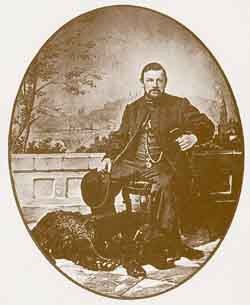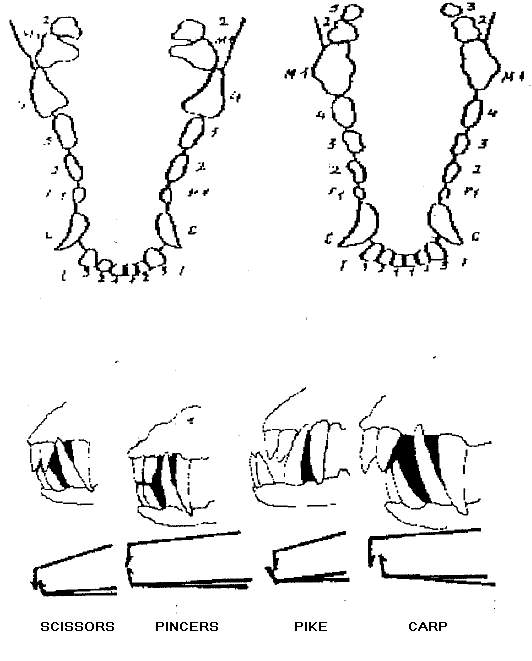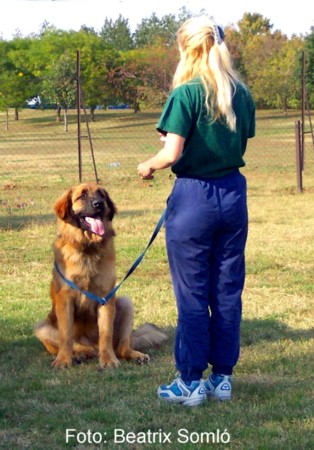Welcome
to the Homepage of Marzipan Vom Matthiasberg "Mador"!
(HCH
Liam Vom Matthiasberg x HCH Hildegard Vom Matthiasberg) Breeders: Lajos
Mészáros, Monika Nyitrai
Owner: Leidl Andrea H-1108 Budapest, Pázsitfû u. 1. Hungary
Mobile: +36-70-315-4758 E-mail: leidla@hotmail.com
FCI-Standard
N°145 / 20. 09. 2002 / GB
Original
Source: www.fci.be
Commentaries: http://www.leonberger.com/LeoWorld/commentary.html
LEONBERGER
What a leo is good for? Scroll down >>
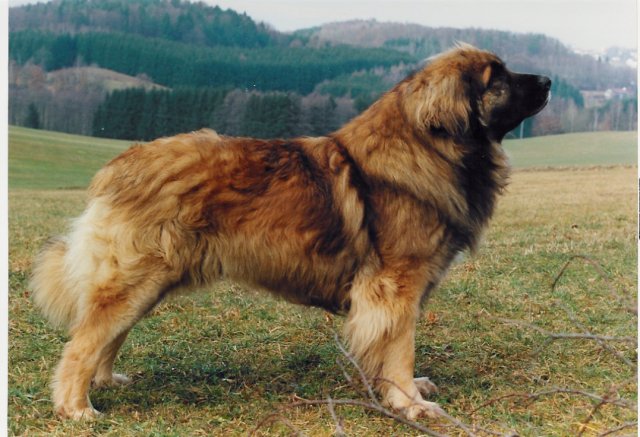
For me this
picture represents best the leonberger. Mador's grandfather Lejonwalds
Woss Löwe v. Lejonhuvfud
TRANSLATION : Mrs. C. Seidler, revised by Mrs E.Peper
ORIGIN : Germany.
DATE OF PUBLICATION OF THE ORIGINAL VALID STANDARD : 04.01.1996.
UTILIZATION : Watch, Companion and Family Dog.
CLASSIFICATION
F.C.I. :
Group 2 Pinscher and Schnauzer, Molossoid breeds, Swiss Mountain and Cattle
Dogs and other breeds.
Section 2.2 Molossoid breeds, Mountain type.
Without working trial.
BRIEF
HISTORICAL SUMMARY : At
the end of the thirties, beginning of the forties of the 19th century,
Heinrich Essig, town Councillor in Leonberg near Stuttgart, crossed a
black and white Newfoundland bitch with a so-called "Barry"
male from the monastery hospice Grand St.Bernhard. Later a Pyrenean Mountain
Dog was added. This resulted in very large dogs with predominantly long,
white coats. Essig's aim was for a lion-like dog. The lion is the heraldic
animal of the city of Leonberg.
The first dogs really called "Leonbergers" were born in 1846.
They combined the excellent qualities of the breeds from which they stemmed.
Only a short time later, many of these dogs were sold as status symbols
from Leonberg all over the world. At the end of the 19th century, the
Leonberger was kept in Baden-Württemberg as the preferred farm dog.
His watch and draft abilities were much praised.
In both World Wars and the needy post war times, the numbers of breeding
stock reduced dramatically. Today the Leonberger is an excellent family
dog which fulfills all the demands of modern life.
GENERAL APPEARANCE : According to his original purpose, the Leonberger is a large, strong, muscular yet elegant dog. He is distinguished by his balanced build and confident calmness, yet with quite lively temperament. Males, in particular, are powerful and strong.
IMPORTANT PROPORTIONS : Height at the withers to length of body : 9 to 10. The depth of chest is nearly 50% of the height at withers.
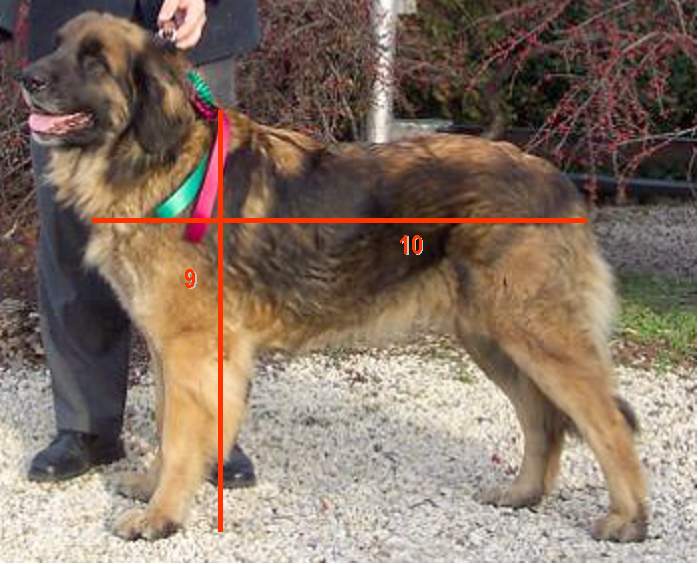

Frida Vom
Matthiasberg and Urka de la Ferme Toijol
BEHAVIOUR
/ TEMPERAMENT : As a family dog, the Leonberger is an agreeable partner
for present day dwelling and living conditions, who can be taken anywhere
without difficulty and is distinguished by his marked friendliness towards
children. He is neither shy nor aggressive. As a companion, he is agreeable,
obedient and fearless in all situations of life.
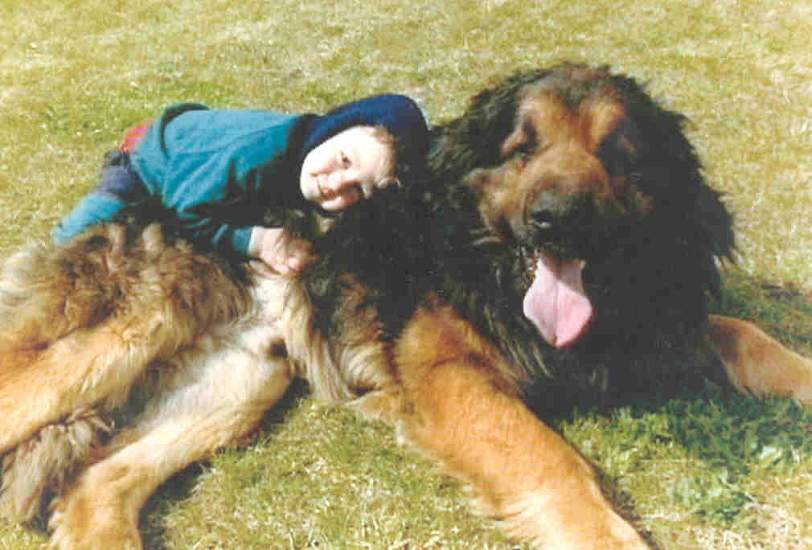
Ördöghegyi-Sphinx
Bonanza "Rufus" with Mészáros Lajos Fülöp
The following are particular requirements of steady temperament :
- Self assurance
and superior composure.
- Medium
temperament (including playfulness).
- Willing
to be submissive.
- Good capacity
for learning and remembering.
- Insensitive to noise.
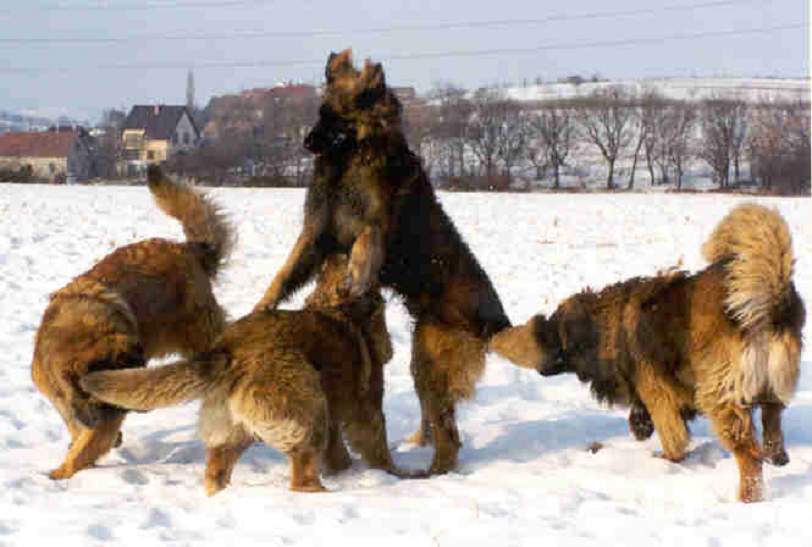
Playfulness
- The "F" litter Vom Matthiasberg
HEAD : On the whole deeper than broad and elongated rather than stocky. Proportion of length of muzzle to length of skull: about 1 to 1. Skin close fitting all over, no wrinkles.
CRANIAL
REGION :
Skull : In profile and seen from the front, slightly arched. In balance
with body and limbs, it is strong but not heavy. The skull at its back
part is not substantially broader than near the eyes.
Stop : Clearly recognisable but moderately defined.
FACIAL
REGION :
Nose
: Black.
Muzzle
: Rather long, never running to a point; nasal bridge of even breadth,
never dipped, rather slightly arched (roman nose).
Lips : Close fitting, black, corners of lips closed.
Jaws/Teeth : Strong jaws with a perfect, regular and complete scissor
bite, the upper teeth closely overlapping the lower teeth without any
gap, and teeth set square to the jaw with 42 sound teeth according to
the dentition formula (missing M3 tolerated). Pincer bite is accepted;
no constriction at the canines in the lower jaw.
Cheeks :
Only slightly developed.
Eyes : Light brown to as dark brown as possible, medium size, oval, neither
deep set, nor protruding, neither too close together nor too wide apart.
Eyelids close fitting, not showing any conjunctiva. The white of the eye
(the visible part of the sclera) not reddened.
Ears : Set on high and not far back, pendant, of medium size, hanging
close to the head, fleshy.
NECK : Running in a slight curve without break to the withers. Somewhat long rather than stocky, without throatiness or dewlap.
BODY
:
Withers : Pronounced, specially in males.
Back : Firm, straight, broad.
Loins : Broad, strong, well muscled.
Croup : Broad, relatively long, gently rounded, flowing to merge with
tail set on; never overbuilt.
Chest : Broad, deep, reaching at least to the level of the elbows. Not
too barrel shaped, more oval.
Underline and belly : Only slightly tucked up.
TAIL : Very well furnished; while standing, it hangs down straight;
also in movement it is only slightly curved and if at all possible should
not be carried above the prolongation of the topline.
LIMBS : Very strong, specially in males.
FOREQUARTERS
: Forelegs straight, parallel and not too close.
Shoulders / Upper arm : Long, sloping, forming a not too blunt angle,
well muscled.
Elbows : Close to the body.
Pastern : Strong, firm; seen from the front, straight; almost vertical,
seen from the side.
Forefeet : Straight (turning neither in nor out), rounded, tight, toes
well arched; black pads.
HINDQUARTERS
: Seen from the rear, position of the hind legs not too close, parallel.
Hocks and feet : turned neither in nor out.
Pelvis : Slanting.
Upper thigh : Rather long, slanting, strongly muscled. Upper and lower
thigh form a distinct angle.
Hocks : Strong, distinct angle between lower thigh and rear pastern.
Hind feet : Standing straight, only slightly longish. Toes arched, pads
black.
GAIT / MOVEMENT : Ground covering even movement in all gaits. Extending well in front with good drive from the hindquarters. Seen from front and behind the limbs move in a straight line when walking or trotting.
COAT
HAIR : Medium soft to coarse, profusely long, close fitting, never parted, with the shape of the whole body be visible despite the thick undercoat. Straight, slight wave still permitted; forming a mane on neck and chest, specially in males; distinct feathering on front legs and ample breeches on hind legs.
COLOUR : Lion yellow, red, reddish brown, also sandy (pale yellow, cream coloured) and all combinations in between, always with a black mask. Black hair tips are permitted; however, black must not determine the dog's basic colour.
Lightening up of the basic colour on the underside of the tail, the mane, the feathering on the front legs and the breeches on the hind legs must not be so pronounced as to interfere with the harmony of the main colour. A small white patch or stripe on the chest and white hairs on the toes are tolerated.
SIZE
:
Height at the withers :
- Dogs 72 to 80 cm (recommended average 76 cm).
- Bitches
65 to 75 cm (recommended average 70 cm).
FAULTS : Any departure from the foregoing points should be considered a fault and the seriousness with which the fault should be regarded should be in exact proportion to its degree.
DISQUALIFYING
FAULTS :
- Shy or
aggressive dogs.
- Severe
anatomical faults (i.e. pronounced cow hocks, pronounced roach back,
bad swayback; front feet turning out extremely. Totally insufficient
angulation of shoulder, elbow, stifle or hock joints.
- Brown
nose leather.
- Very strong
lack of pigment in lips.
- Absence
of teeth (with the exception of M3). Over- or undershot or other faults
in mouth.
- Eyes without
any brown.
- Entropion,
ectropion.
- Distinct
ring tail or too highly curled up tail.
- Brown
pads.
- Cords
or strong curls.
- Faulty
colours (brown with brown nose and brown pads; black and tan; black;
silver; wild-coat colour).
- Complete
lack of mask.
- Too much white (reaching from toes onto pasterns), white on chest larger than palm of hand, white in other places).
N.B. : Male animals should have two apparently normal testicles fully descended into the scrotum.
What a leonberger is good for?
Nowadays, leonbergers primarily are family and companion dogs, they live well together with other dogs and other animals.
|
Leonberger
with another dog (my beloved caucasian shepherd Alex)
|
Leonbergers
in the lounge with a cat in the middle (Leoburns
Kennel (New Zealand), thank you Elsha)
|
Leonberger
and minihorse (Leoburns
Kennel (New Zealand), thank you Elsha)
|
Leonberger
and a rabbit (Photo: Groupe
Romand du Leonberg (Switzerland)
|
Leonberger
and a donkey
(thank you Carla) |
Leonberger
and chickens (Photo: Lewenhart
kennel (Canada), thank you Naomi)
|
Despite its size and strength, teaching a leonberger to defense work is not advisable at all. Leonbergers basically are balanced family dogs. Obedience practice (at a basic level) is useful to each dog, to my view, it eases everyday life with the dog and in our modern world it can even save the dog's life (i.e. stop at roads). Tracking can be successful but for this we need an extraordinarily searching dog. Leonbergers are successfully used in search and rescue work.
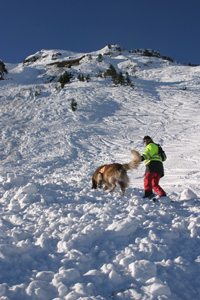 Leonberger in avalanche rescue work (source: The Netherland Leonberger Club www.leonberger.nl) Used with permission. |
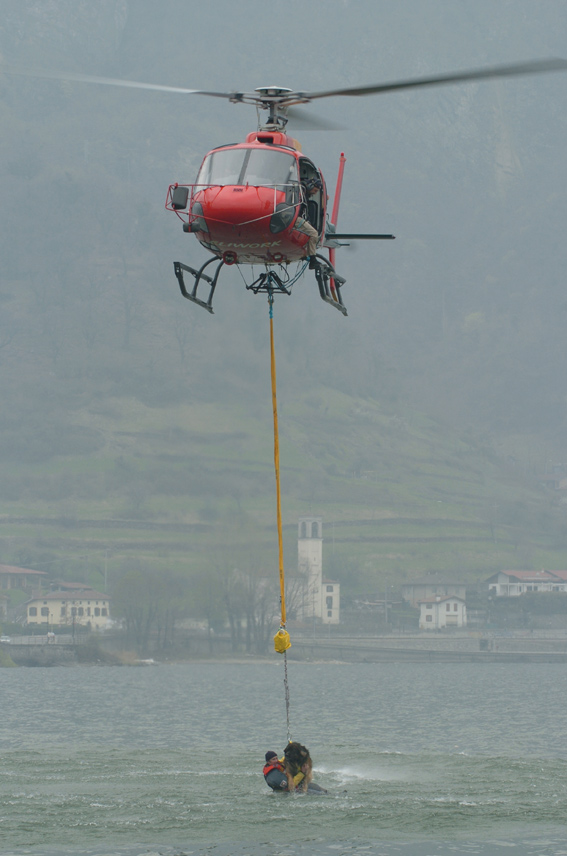 Leonberger at rescue work with helicopter Aron Van Het Hof Van Eden "Zac" Scuola Italiana Cani Salvataggio www.canisalvataggio.it (Source: www.leovanhethofvaneden.com) Used with permission. |
Dog shows are nowadays more and more popular where the optical structure, the "beauty" of the dog is compared to the standard describing the "ideal" specimen of the breed. Training a show dog is widely different from training a sport dog. A whole new speciality is ring dressure, posing, showing teeth and at breeds where it is needed, cosmetics and trimming. When showing a leonberger it is usually enough to bath and brush the dog with the right dog shampoo and conditioner since it is a mountain breed. Teaching ring dressure (like every exercise) can be started at the age of a couple of months so the dog would know what we expect in the ring in the extreme circumstances of the show. Handling is very important, many times the jugde's decision is merely based on how one dog shows him/herself at the moment of judgeing. Well prepared dogs are neutral to the dogs and people around, and they pay full attention to the owner/handler at all times, they move together in harmony.
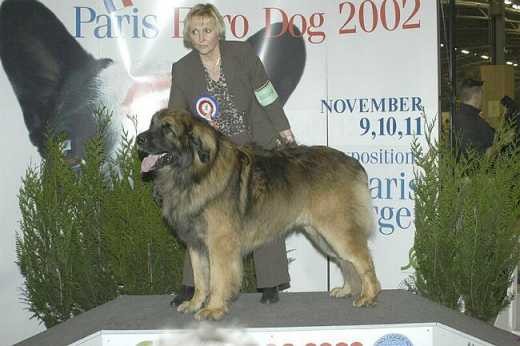
Leonbergi at dog show
Mador's grandfather, Yankee de la Ferme Toijol,
breeder and owner: Mme Gisele Goffin (B)
(Photo:
International Leo Gazette)
Agility is widespread at owners of pure and mixed breeds alike. Spending time together, winning the obstacles together is joyful for the dog and the owner. According to the current Agility regulations there are three size categories (small, medium and large) and training is based on this as well, but there exists "Giant" category (officially not recognized yet) where extremely large dogs can work without risking to overcharge their joints.

Agility with
leonberger (Photo: leonbergerunion.com)
There are some areas though where leonbergers can be especially well used. Even at puppyhood leonbergers are very responsive to water (i.e. playing with garden tap at the age of 3 months), and gradually with love we can train them to apport from water. This is a very good basic for water rescue work and later even participation at examinations and competitions. Today in Hungary there is no practice at all for this despite the large number of dogs who are able to do similar activities (apart from leonbergers i.e. newfoundlands or landseers).
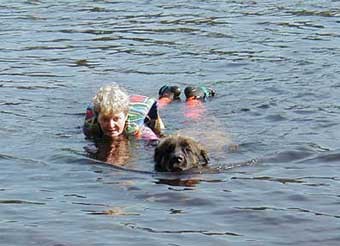
Water
rescue with leonberger (Photo: Lelionaz
kennel, Sweden)
Water test requirements from the Leonberger Club of Great Britain (UK):
http://www.leonbergerstudbook.co.uk/lcgb_working_tests.htm
The benefits of animal-assisted therapy (AAT) are well known abroad and even in Hungary there are initiatives and successes. The force tranquil radiating from the leonberger, the balanced, stable nerves and the playfulness make the leonberger an ideal therapy dog. At some places there are well developed conditions to assess the dog's instincts and to participate at programmes (the most common areas are hospitals, elderly homes, autist or mentally/physically challenged children, etc.). Please visit Mador's therapy page!

Visit
Mador's therapy page!
Carting is a useful passtime, especially if you have children and a sled too.
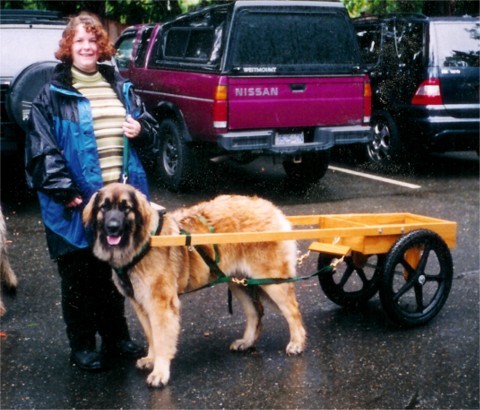
Kefira Vom
Matthiasberg carting
(Source: Tir
na nÓg Leonbergers)
You will be proud of your leos as sleddogs. Especially if such a sweet brave puppy leads your pack...

Leonbergers
as sleddogs (Source: Groupe
Romand du Leonberg, Switzerland)
Lead puppy:
Ann's Lion Mr Rubus Bear "Rubus" (thank you Mike and Anne Croom,
Ann's Lions Kennel,
Finland).
Apart from the above, leonbergers can help you to bring your art talent on surface and give you inspiration. The process of creation is calming, and one can be proud of the result.

Made by: Irma van Gog Habilis
Leona kennel (The Netherlands).
Model: Skjaergaardens Cool Windsor "Ben", owned by Amy Kippernes
Seapride kennel
(Norway).
Used with permission from both of them. Thank you Irma and Amy.
©
Mador.hu


